Fix transparent popup problem with Google Chrome on Windows 10 with VMware Workstation Pro
- VMware
- 21 May 2022 at 15:38 UTC
-

- 2/2
4. Force the virtual machine to use OpenGL
Another possibility is to modify the ".vmx" configuration file of your virtual machine so that it uses OpenGL.
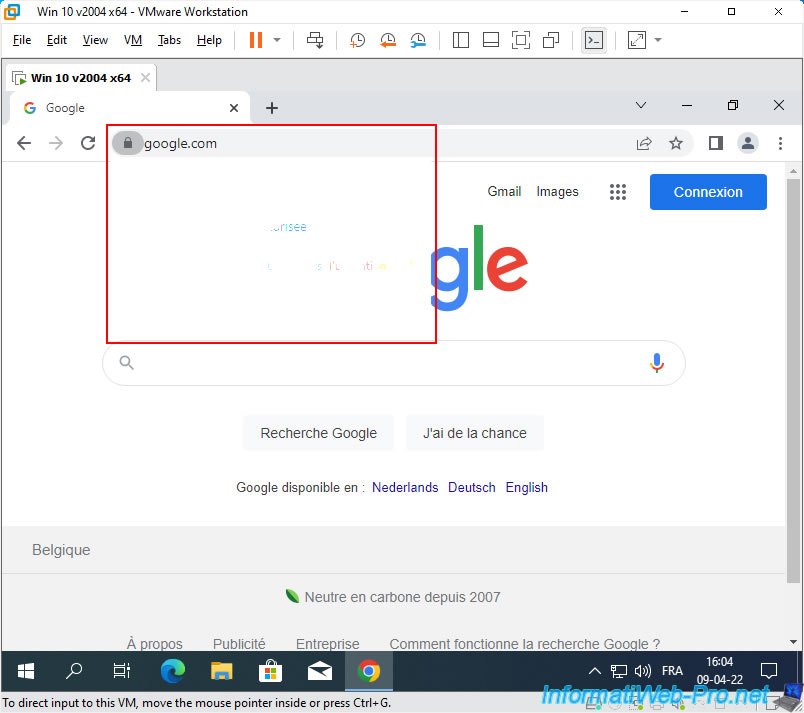
To do this, shut down the virtual machine concerned and close the tab corresponding to it (or close VMware Workstation Pro).
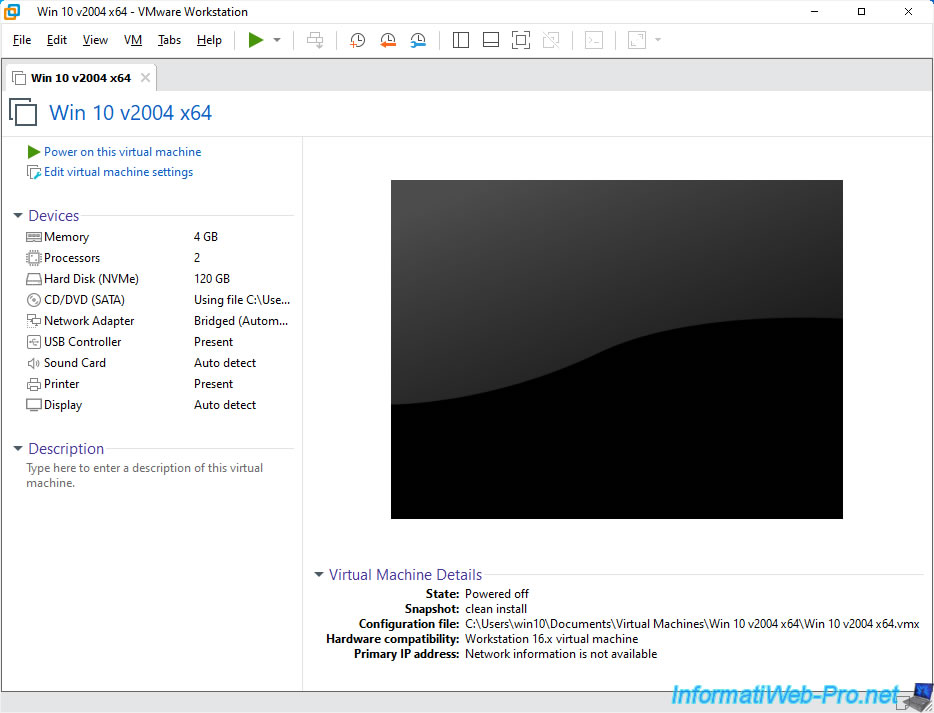
Then, open the ".vmx" file of it with notepad.
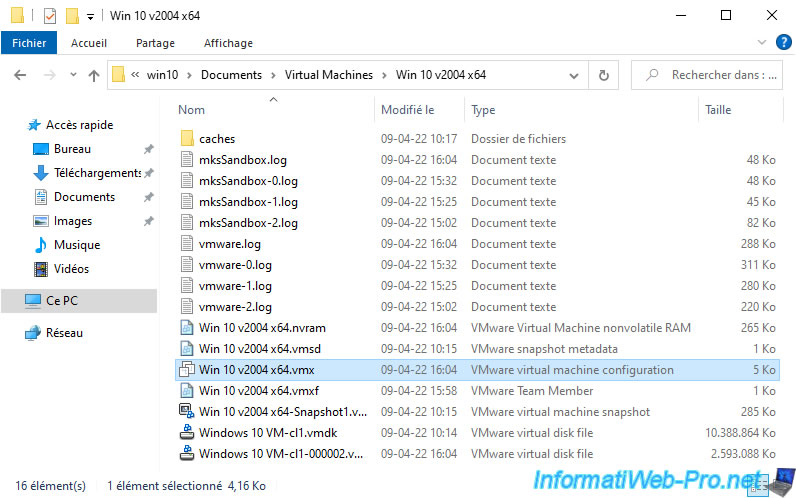
At the end of this ".vmx" file, add these lines :
Plain Text
mks.enableDX11Renderer="FALSE" mks.enableOpenGLRenderer="TRUE"
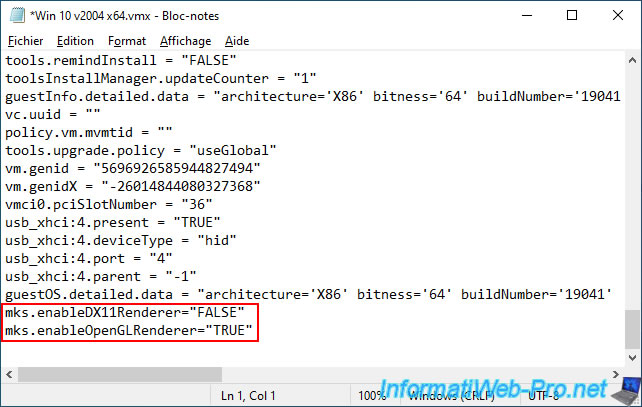
Then, save the changes.
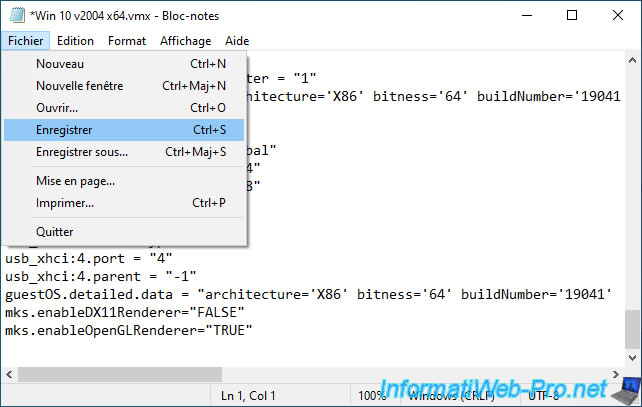
For these modifications to be taken into account, you must double-click on the ".vmx" file that you have just modified.
In effect, this forces VMware Workstation Pro to rescan this configuration file to use the new settings added.
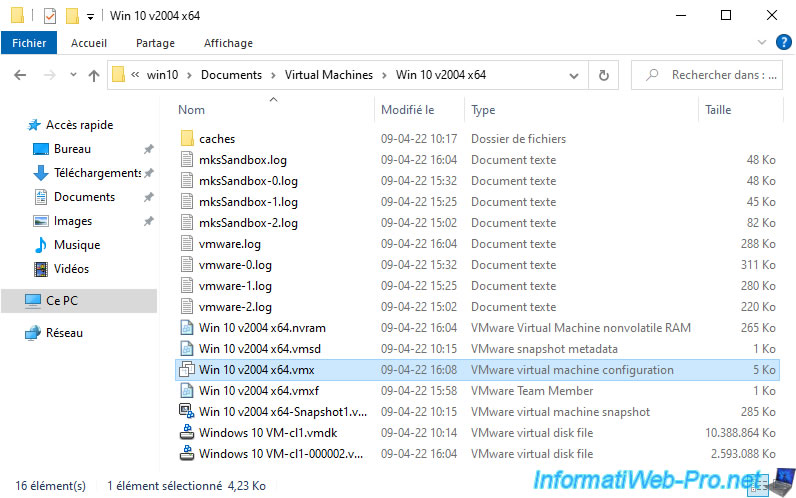
Your virtual machine appears in VMware Workstation Pro.
Start this virtual machine.
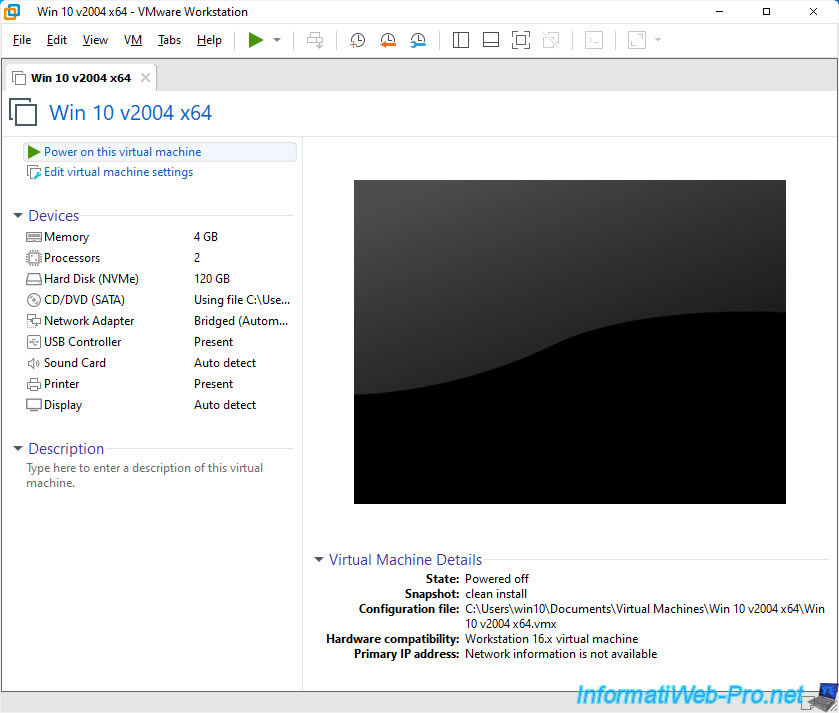
As you can see, the Google Chrome popup will display correctly.
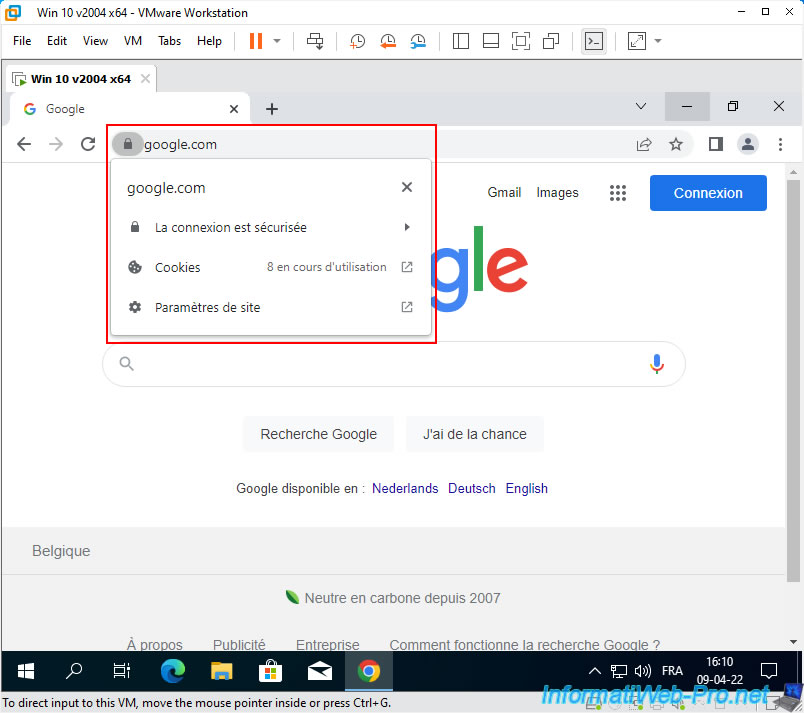
However, if you access the "chrome://gpu" address from Google Chrome, you will see that this modification will have caused the disabling of hardware acceleration.
Indeed, if you look on the "Prepare a Virtual Machine to Use Accelerated 3D Graphics" page of the official documentation of VMware Workstation Pro, you will see that DirectX is necessary for a virtual machine to use 3D acceleration (hardware acceleration ).
Since you have disabled the use of DirectX 11 in your virtual machine's ".vmx" configuration file, 3D acceleration (hardware acceleration) is no longer available for this virtual machine.
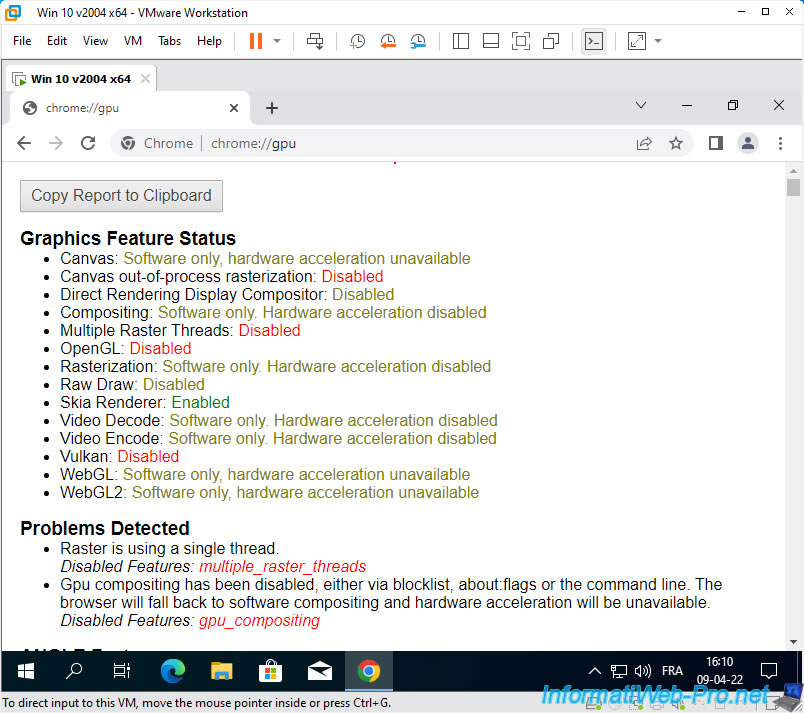
5. Use an older version of VMware Tools
The last solution to work around this problem is to uninstall the current version of VMware Tools installed in this virtual machine and reinstall an older version (which doesn't contain this problem).
However, depending on your computer's hardware, this may not work for you.
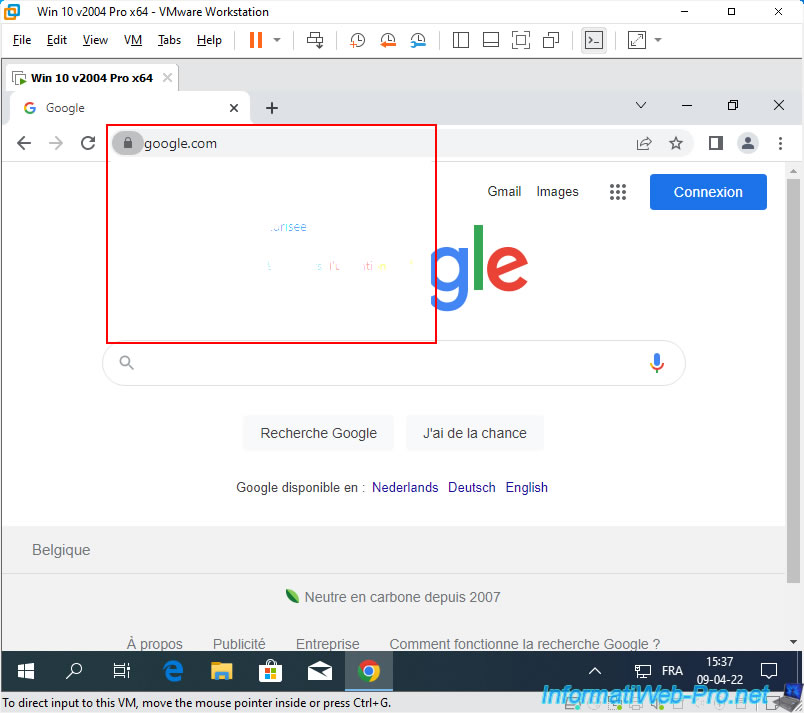
To find out the version of VMware Tools currently installed in your virtual machine, right-click "About VMware Tools" on the VMware Tools icon in the Windows 10 taskbar.
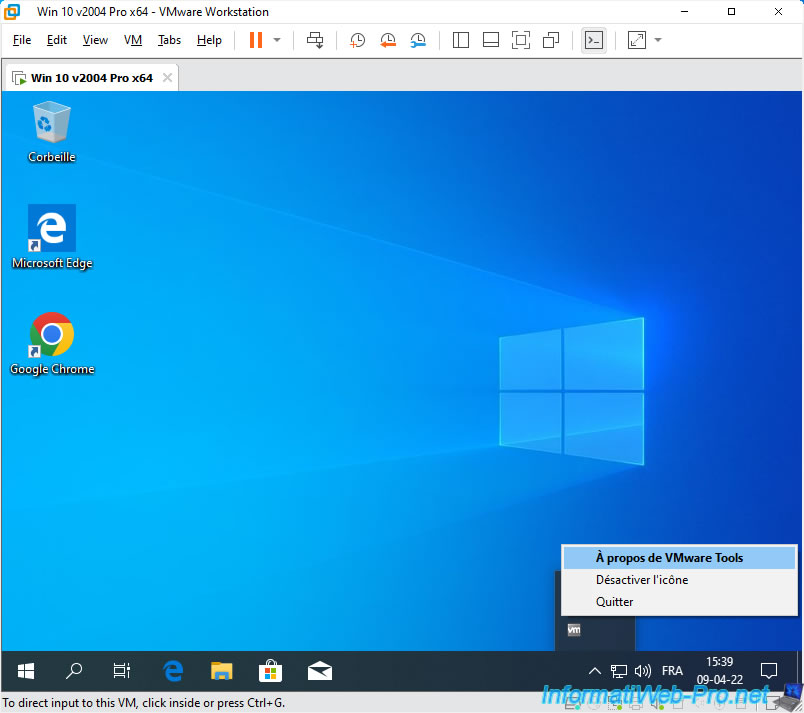
As you can see, currently the installed version is : 11.2.6 build 17901274.
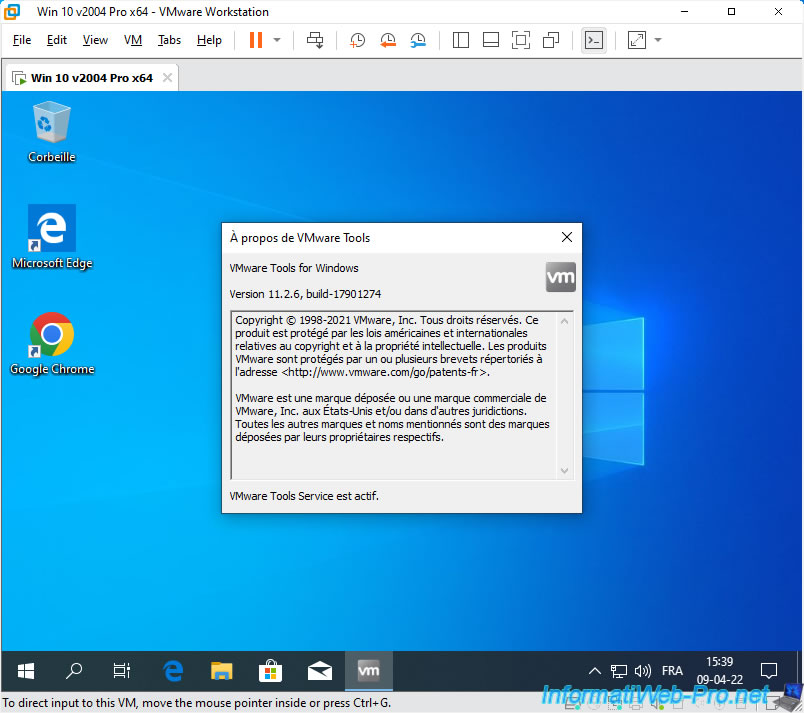
You can also see this version by opening the Windows 10 control panel and then viewing the list of installed programs.
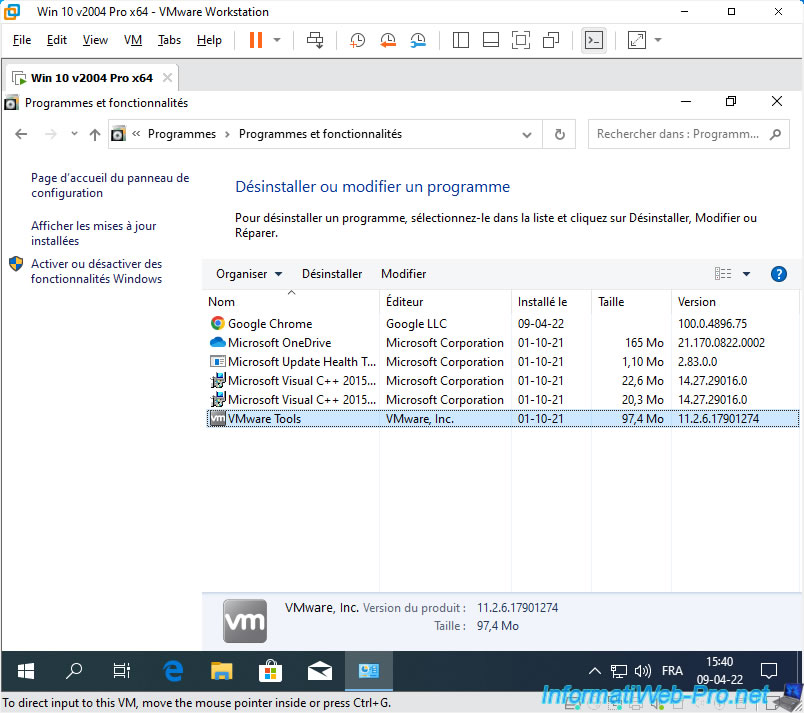
According to the feedback of several users on the Internet, this problem is not present in the version 11.1.5-16724464 of the VMware Tools.
To download this old version from the official VMware site, use the link corresponding to your Windows 10 architecture :
- 32 bits : VMware-tools-11.1.5-16724464-i386.exe
- 64 bits : VMware-tools-11.1.5-16724464-x86_64.exe
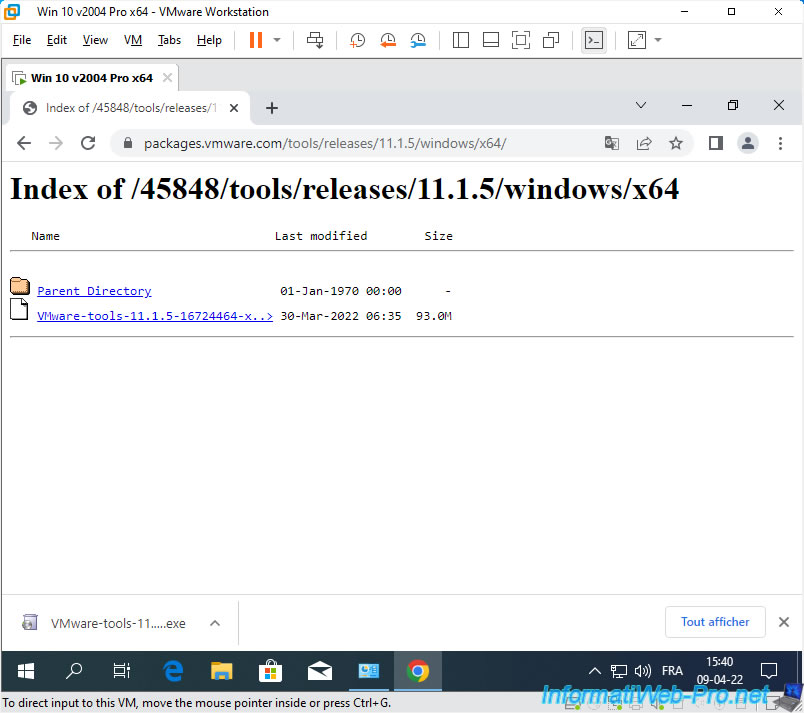
Once the VMware Tools v11.1.5-16724464 installation file is downloaded, uninstall the current version of VMware Tools present in your virtual machine.
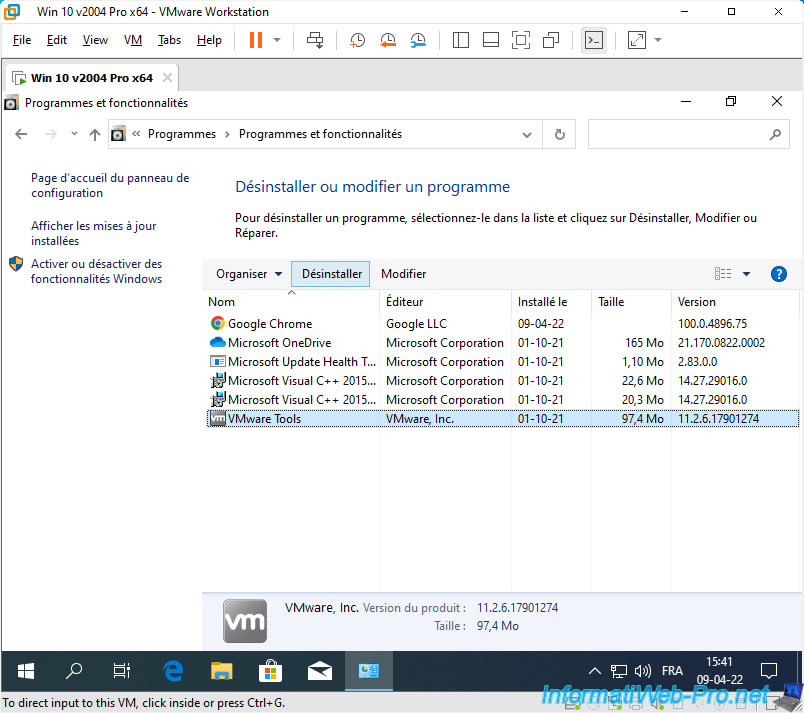
Wait while uninstalling VMware Tools.
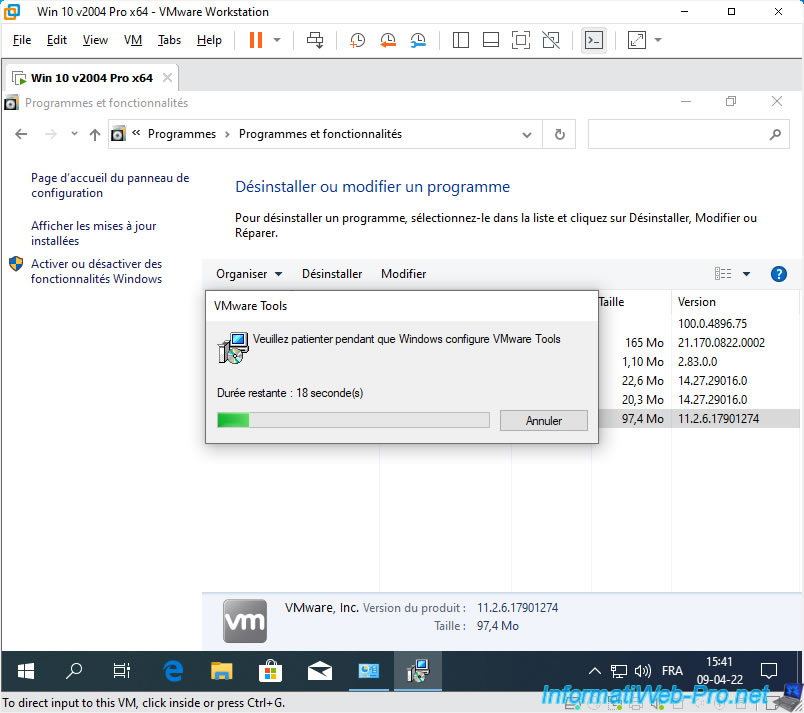
Once the VMware Tools are uninstalled, you will need to restart your virtual machine.
Click Yes.
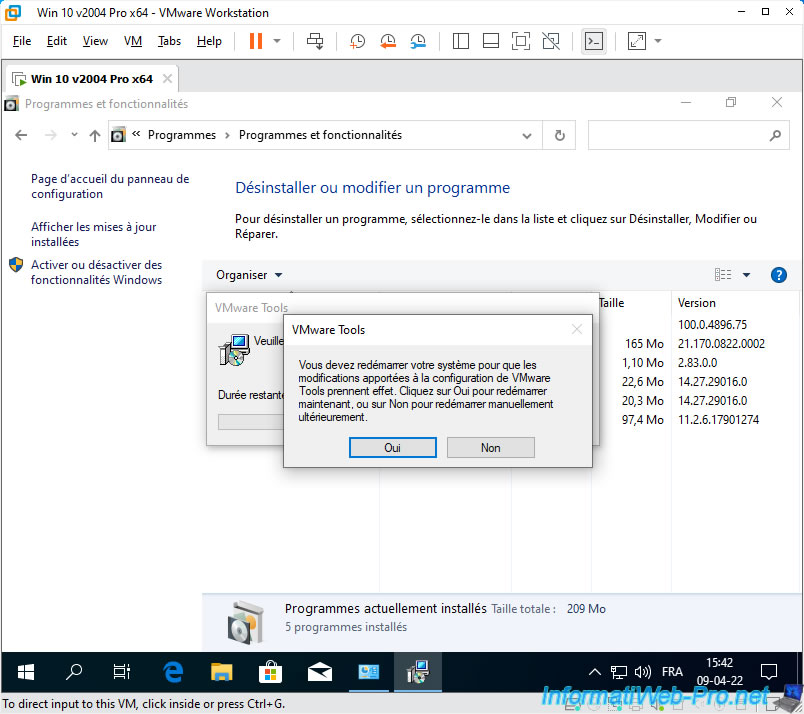
Once the virtual machine has restarted, launch the installation file of the old version of VMware Tools downloaded earlier.
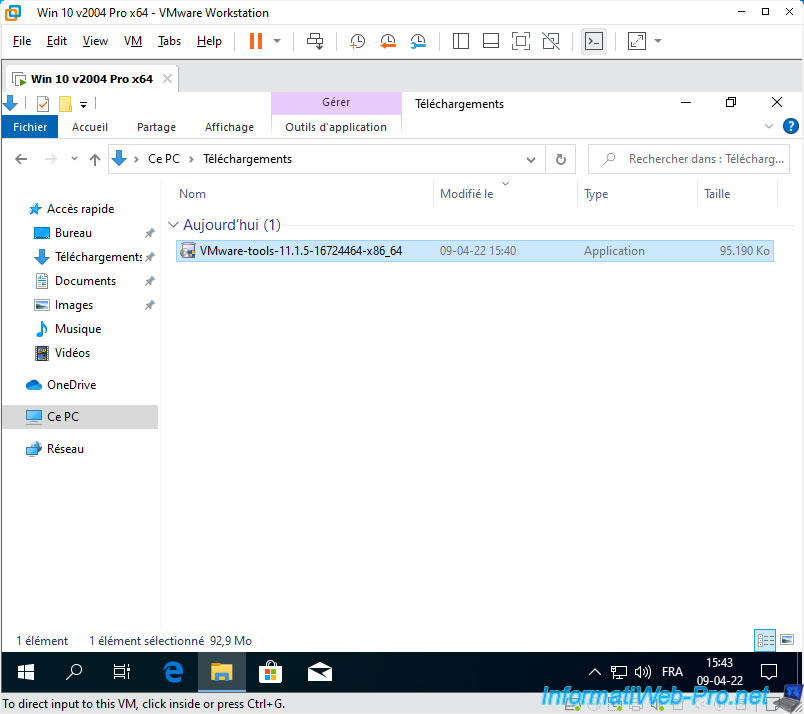
The familiar VMware Tools installation wizard appears.
Click Next.
Install these as you usually do.
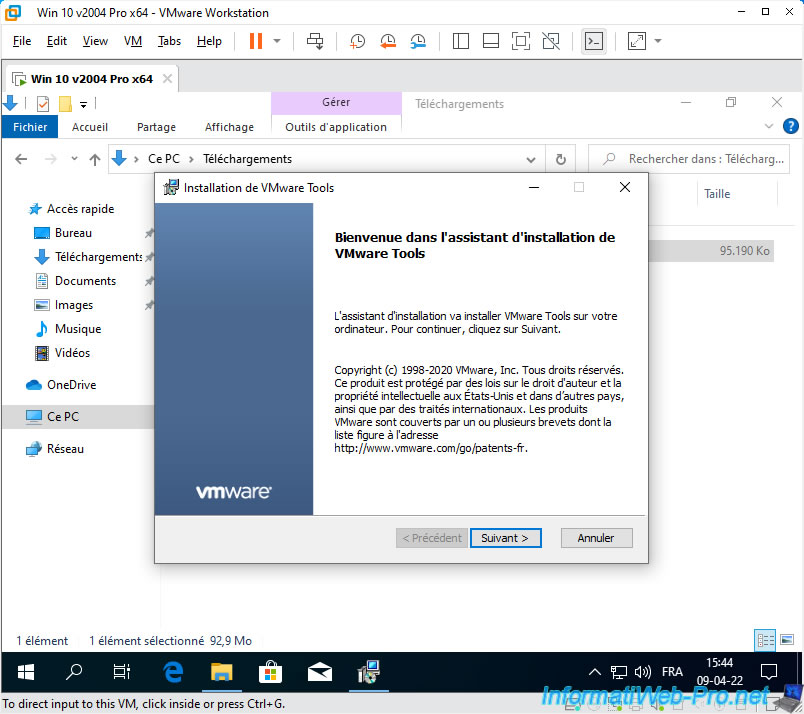
Once the VMware Tools are installed, click on : Finish.
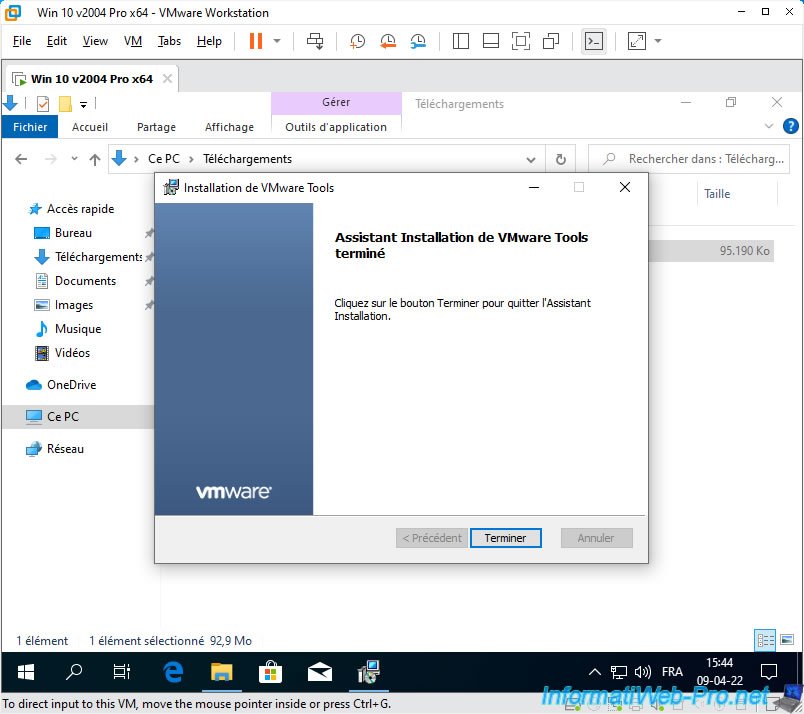
Then, click "Yes" to restart your virtual machine again.
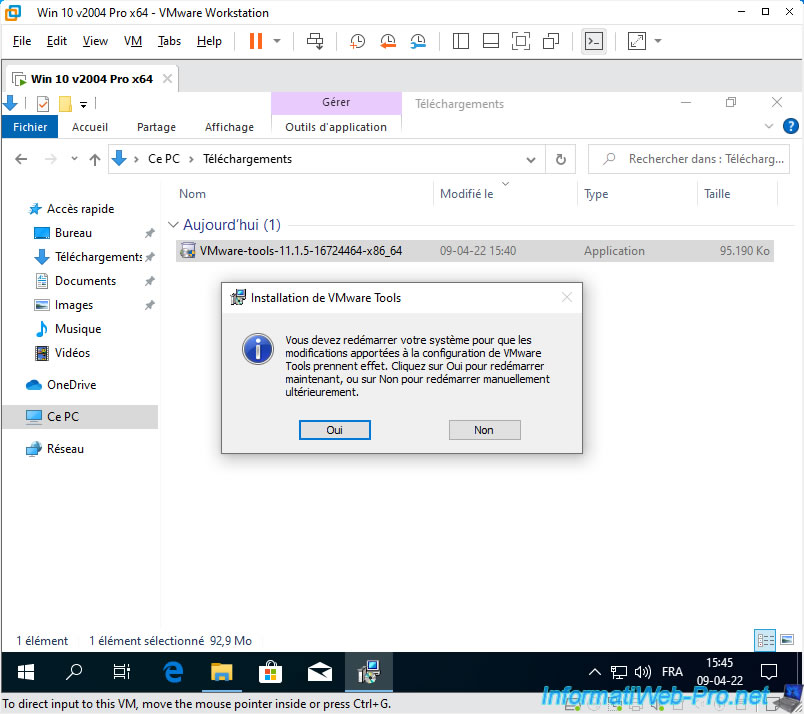
As expected, the version of VMware Tools installed is : 11.1.5.16724464.
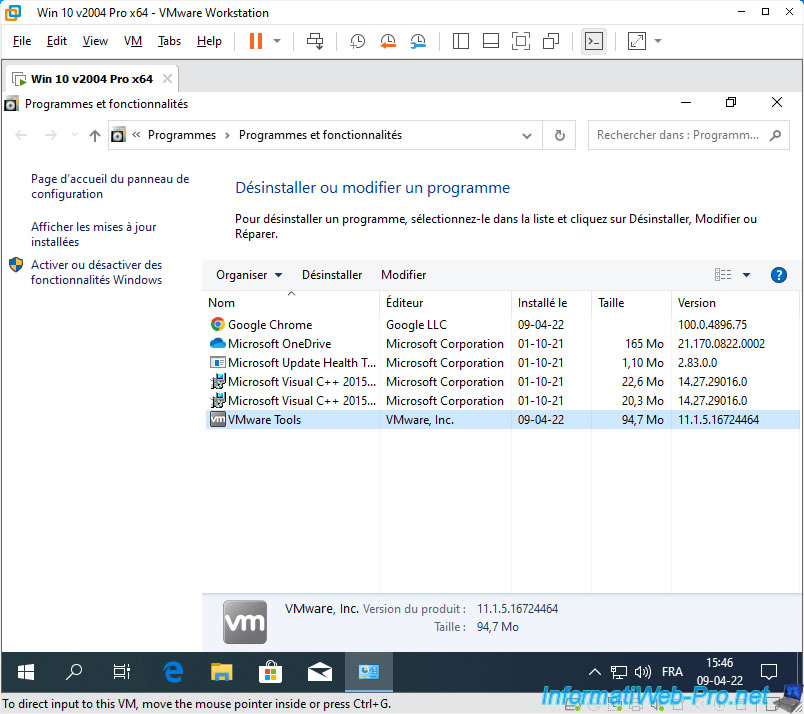
As expected, the Google Chrome popup is displayed correctly.
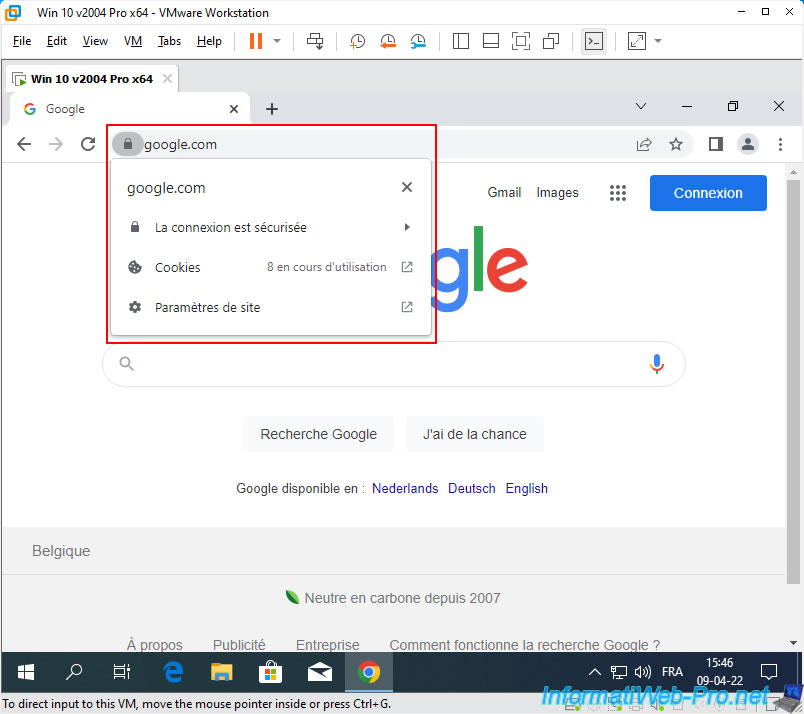
Important : this solution is the only one that solves this transparency problem while maintaining hardware acceleration.
The only downside is that this solution seems not to work with all physical computers (depends on your physical hardware).
In our case, on an old computer, it works. But, not on another very recent computer.
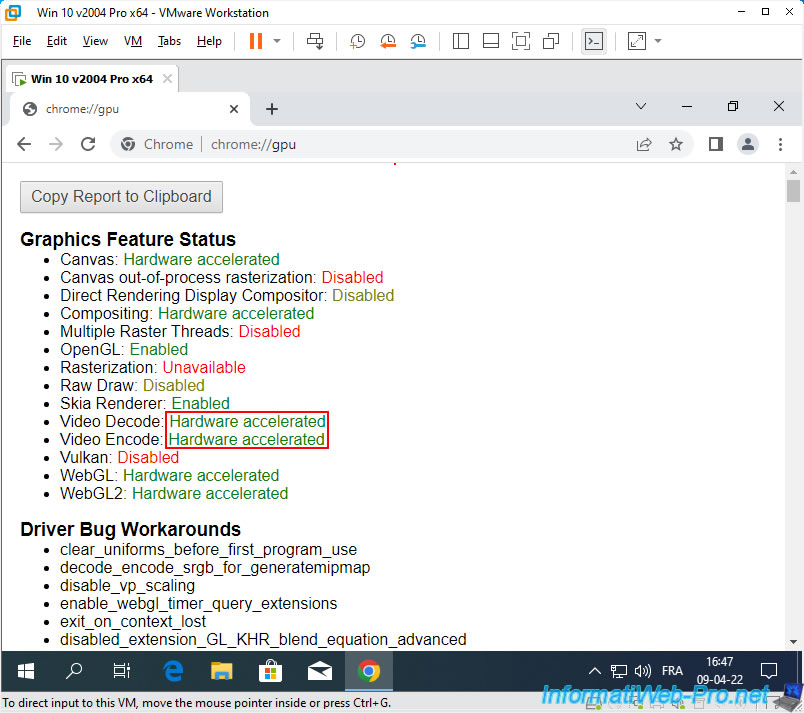
Share this tutorial
To see also
-
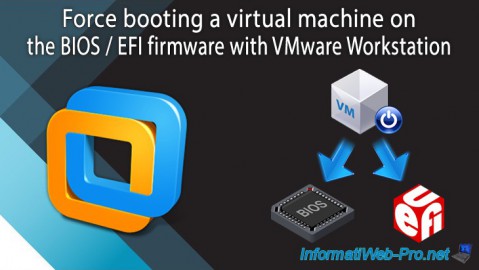
VMware 3/16/2013
VMware Workstation - Boot a VM on the BIOS / EFI firmware
-
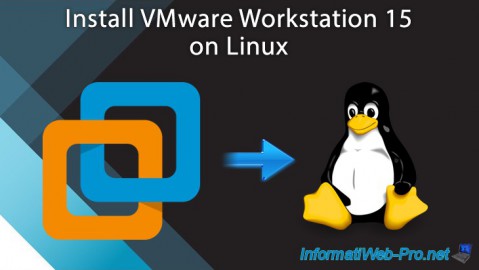
VMware 2/7/2020
VMware Workstation 15 - Installation on Linux
-

VMware 12/24/2021
VMware Workstation 15 - Slice the virtual hard disk of a VM
-
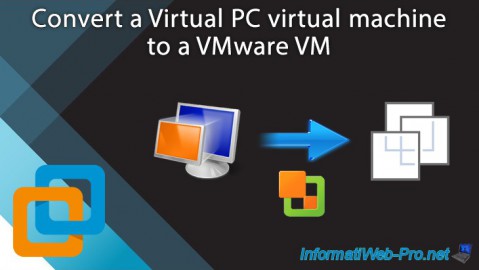
VMware 12/10/2021
VMware Workstation 15.5 - Convert a Virtual PC virtual machine to a VMware VM

No comment